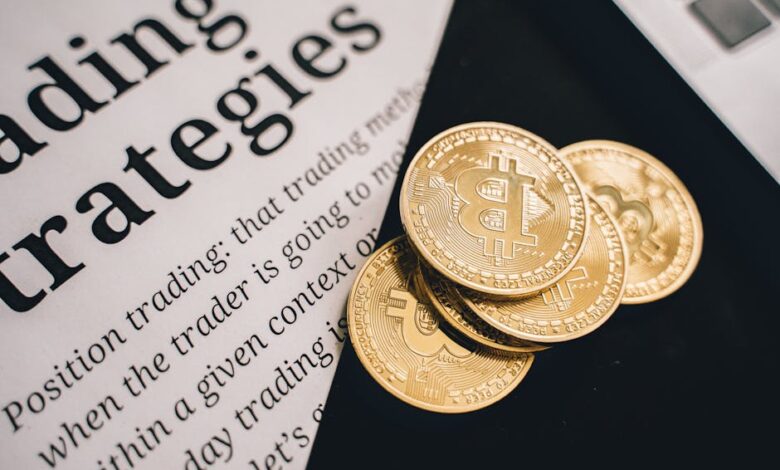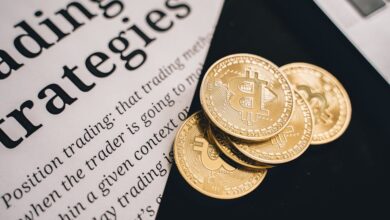Gold in Turbulent Times: Navigating Economic Uncertainty, Inflation, and Investment Strategies

In times of economic uncertainty, investors often seek refuge in assets that have historically demonstrated resilience and stability. Among these, gold stands out as a time-honored safe-haven investment, revered not only for its intrinsic value but also for its ability to retain purchasing power amid inflationary pressures. This article delves into the multifaceted role of gold in today’s financial landscape, examining its relationship with inflation, the impact of central bank policies, and the dynamics of geopolitical tensions that drive demand and influence prices.
We will explore various methods of investing in gold—from exchange-traded funds (ETFs) and physical gold to mining stocks—providing insights into the advantages and challenges of each approach. Additionally, we’ll compare gold with emerging alternatives like cryptocurrencies, assessing their effectiveness as hedges against inflation. By analyzing historical trends and current market conditions, we aim to illuminate the enduring allure of gold as a key component in diversifying investment portfolios. Join us as we navigate the complexities of gold investment and uncover why it remains a cornerstone for many seeking financial security in an unpredictable world.
- 1. "Gold as a Safe Haven: Understanding Its Role in Economic Turmoil"
- 2. "Inflation and Gold: Analyzing the Price Relationship"
1. "Gold as a Safe Haven: Understanding Its Role in Economic Turmoil"
Gold has long been recognized as a safe-haven asset, particularly during periods of economic turmoil. Its intrinsic value, historical significance, and stability make it a preferred choice for investors seeking to protect their wealth. When financial markets are volatile, or when geopolitical tensions rise, gold often serves as a refuge for capital. This phenomenon can be attributed to several key factors.
Firstly, gold is universally accepted and has retained its value across different cultures and eras. Unlike fiat currencies, which can be devalued by inflation or government policies, gold's supply is limited and cannot be manipulated in the same way. This scarcity is a crucial aspect of its appeal, as it tends to maintain purchasing power over time, particularly in times of crisis.
Secondly, during periods of economic uncertainty, investors typically flock to assets that are perceived as safer. Gold often benefits from increased demand, driving up its price when other investments, such as stocks or bonds, are underperforming. This inverse relationship with other asset classes highlights gold's role as a stabilizing force in a diversified portfolio.
Furthermore, gold's historical performance during inflationary periods reinforces its status as a hedge against economic instability. As inflation rises, the real value of cash and fixed-income investments can decline, making gold an attractive alternative. Investors often turn to gold to preserve their wealth when they anticipate rising prices, further bolstering its demand.
In summary, gold's enduring reputation as a safe-haven asset during economic turmoil is rooted in its historical significance, intrinsic value, and inverse correlation with other financial assets. As uncertainty looms, investors are likely to continue viewing gold as a reliable store of wealth, reinforcing its role in financial markets.
Gold has long been regarded as a safe-haven asset, particularly during periods of economic uncertainty. Its unique properties—intrinsic value, durability, and universal acceptance—contribute to its appeal as a stable store of wealth. Investors often flock to gold when facing inflation, currency devaluation, or geopolitical tensions, as it tends to retain value when other investments falter.
The relationship between gold prices and inflation is particularly noteworthy. Historically, gold has acted as a hedge against inflation; as the purchasing power of fiat currencies diminishes, gold often appreciates. This inverse correlation is evident during inflationary periods when investors seek to preserve their capital through tangible assets like gold.
For those looking to invest in gold, several options exist. Exchange-traded funds (ETFs) offer a convenient way to gain exposure to gold without the need to store physical bars or coins. These funds typically track the price of gold or invest in gold mining companies, providing diversification within the commodity space. Physical gold, such as bullion or coins, allows for direct ownership and can serve as a tangible asset in times of crisis. Alternatively, investing in mining stocks can offer leveraged exposure to gold prices, but with added risks associated with operational performance and market volatility.
Central bank policies also play a crucial role in influencing gold prices. When central banks adopt accommodative monetary policies—such as low interest rates or quantitative easing—this often leads to increased demand for gold as a hedge against currency depreciation. Additionally, central banks themselves are significant buyers of gold, further impacting market dynamics.
In recent years, cryptocurrencies have emerged as a potential alternative to gold for hedging against inflation. While both assets can be considered stores of value, they exhibit different characteristics. Gold’s long-established reputation and stability contrast with the volatility and speculative nature of cryptocurrencies. Investors must weigh these factors when determining which asset aligns better with their inflation-hedging strategy.
Examining historical trends in gold prices reveals valuable insights into its future performance. Periods of economic turmoil, such as the 2008 financial crisis or the COVID-19 pandemic, have often seen gold prices surge as investors seek safety. This historical resilience suggests that gold may continue to serve as a reliable asset in uncertain times.
Moreover, gold plays a vital role in diversifying investment portfolios. Its low correlation with traditional asset classes, such as stocks and bonds, means that adding gold can reduce overall portfolio risk. By incorporating gold, investors can enhance their risk-adjusted returns and provide a buffer against market volatility.
Geopolitical tensions further influence gold demand and prices. During conflicts or instability, gold often witnesses increased buying as individuals and nations seek to safeguard their wealth. This trend underscores gold’s status as a global safe haven, reinforcing its importance in times of uncertainty.
In conclusion, gold’s unique characteristics and historical performance highlight its enduring appeal as a safe-haven asset. Whether through direct ownership, ETFs, or mining stocks, investors have various avenues to incorporate gold into their portfolios, ensuring they are prepared for economic fluctuations and geopolitical challenges.
2. "Inflation and Gold: Analyzing the Price Relationship"
Inflation has a significant impact on gold prices, often driving investors towards gold as a hedge against the eroding purchasing power of fiat currencies. Historically, gold has been viewed as a store of value, especially during periods of rising inflation. When inflation increases, the value of money decreases, leading investors to seek assets that can preserve their wealth.
Empirical data shows that gold prices tend to rise during inflationary periods. For instance, during the late 1970s, the United States experienced high inflation rates, which coincided with a substantial increase in gold prices. This relationship can be attributed to several factors. First, as inflation escalates, central banks may respond by lowering interest rates, making non-interest-bearing assets like gold more attractive. Lower interest rates diminish the opportunity cost of holding gold, further boosting its appeal.
Additionally, inflationary pressures often lead to uncertainty in financial markets, prompting investors to turn to gold as a safe-haven asset. This shift in demand can create a self-reinforcing cycle where rising gold prices lead to increased interest from investors seeking protection against inflation, thus driving prices even higher.
However, it is essential to note that the relationship between gold prices and inflation is not always linear. Factors such as changes in investor sentiment, central bank policies, and geopolitical events can also influence gold prices independently of inflation. For instance, during periods of deflation or low inflation, gold may not perform as well, underscoring the complexity of its relationship with economic indicators.
In summary, while inflation generally supports higher gold prices, the dynamics are multifaceted and influenced by a variety of economic and geopolitical factors. Investors looking to gold as an inflation hedge should consider these complexities and monitor broader economic trends that may impact the metal's value.
In conclusion, gold has consistently proven to be a reliable safe-haven asset during times of economic uncertainty. Its historical resilience against inflation and price volatility underscores its value as a safeguard for investors seeking stability. The various methods of investing in gold—whether through ETFs, physical holdings, or mining stocks—offer diverse opportunities for individuals to incorporate this precious metal into their portfolios. Additionally, central bank policies play a crucial role in shaping gold prices, often influencing investor sentiment and demand.
As the landscape of investment evolves, the comparison between gold and cryptocurrencies as hedges against inflation remains pertinent. While both assets have their merits, gold's long-standing historical significance and established market presence make it a compelling choice for risk-averse investors. Furthermore, geopolitical tensions continue to drive demand for gold, highlighting its role as a protective asset in times of global unrest.
Ultimately, gold serves not only as a hedge against inflation but also as a vital component in diversifying investment portfolios. By understanding its multifaceted nature and the factors that influence its value, investors can make informed decisions that align with their financial goals and risk tolerance. As we look ahead, the enduring appeal of gold as a safe haven in uncertain times remains firmly intact, ensuring its place in the investment strategies of many.





